Hip hop culture, born in the bustling streets of the Bronx in the 1970s, has grown into a global phenomenon influencing music, dance, art, and fashion. What started as a form of expression for marginalized communities has transcended its origins to become a dominant cultural force. This blog explores the journey of hip hop culture and its ever-evolving fashion trends, highlighting how it has shaped and been shaped by society.
#1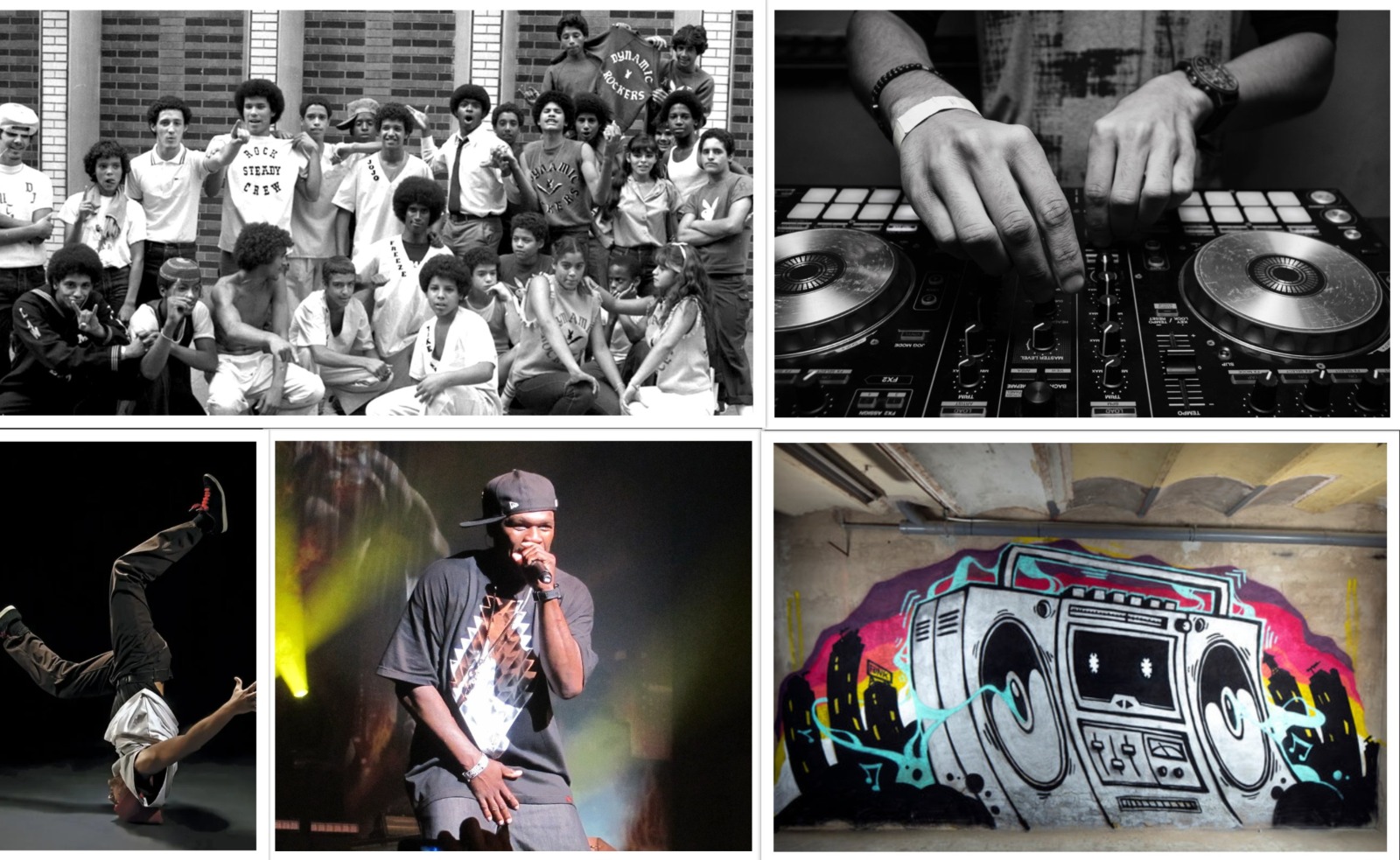 Hip hop culture emerged as a response to the socio-economic challenges faced by African American and Latino communities in New York City. It was a way to channel creativity and address issues like poverty, crime, and racial inequality. The four foundational elements of hip hop are:
Hip hop culture emerged as a response to the socio-economic challenges faced by African American and Latino communities in New York City. It was a way to channel creativity and address issues like poverty, crime, and racial inequality. The four foundational elements of hip hop are:
MCing (Rapping): The vocal and lyrical aspect, where artists deliver rhythmic and rhyming speech.
DJing: The art of mixing and scratching records to create new music and beats.
Breakdancing (B-boying): A dynamic dance style characterized by acrobatic moves and intricate footwork.
Graffiti Art: Visual expression through vibrant street art and murals.
Evolution of Hip Hop Fashion
Hip hop fashion has evolved significantly over the decades, reflecting broader cultural shifts and technological advancements.
The Birth of Hip Hop Culture
 Hip hop culture emerged as a response to the socio-economic challenges faced by African American and Latino communities in New York City. It was a way to channel creativity and address issues like poverty, crime, and racial inequality. The four foundational elements of hip hop are:
Hip hop culture emerged as a response to the socio-economic challenges faced by African American and Latino communities in New York City. It was a way to channel creativity and address issues like poverty, crime, and racial inequality. The four foundational elements of hip hop are:MCing (Rapping): The vocal and lyrical aspect, where artists deliver rhythmic and rhyming speech.
DJing: The art of mixing and scratching records to create new music and beats.
Breakdancing (B-boying): A dynamic dance style characterized by acrobatic moves and intricate footwork.
Graffiti Art: Visual expression through vibrant street art and murals.
Evolution of Hip Hop Fashion
Hip hop fashion has evolved significantly over the decades, reflecting broader cultural shifts and technological advancements.
#2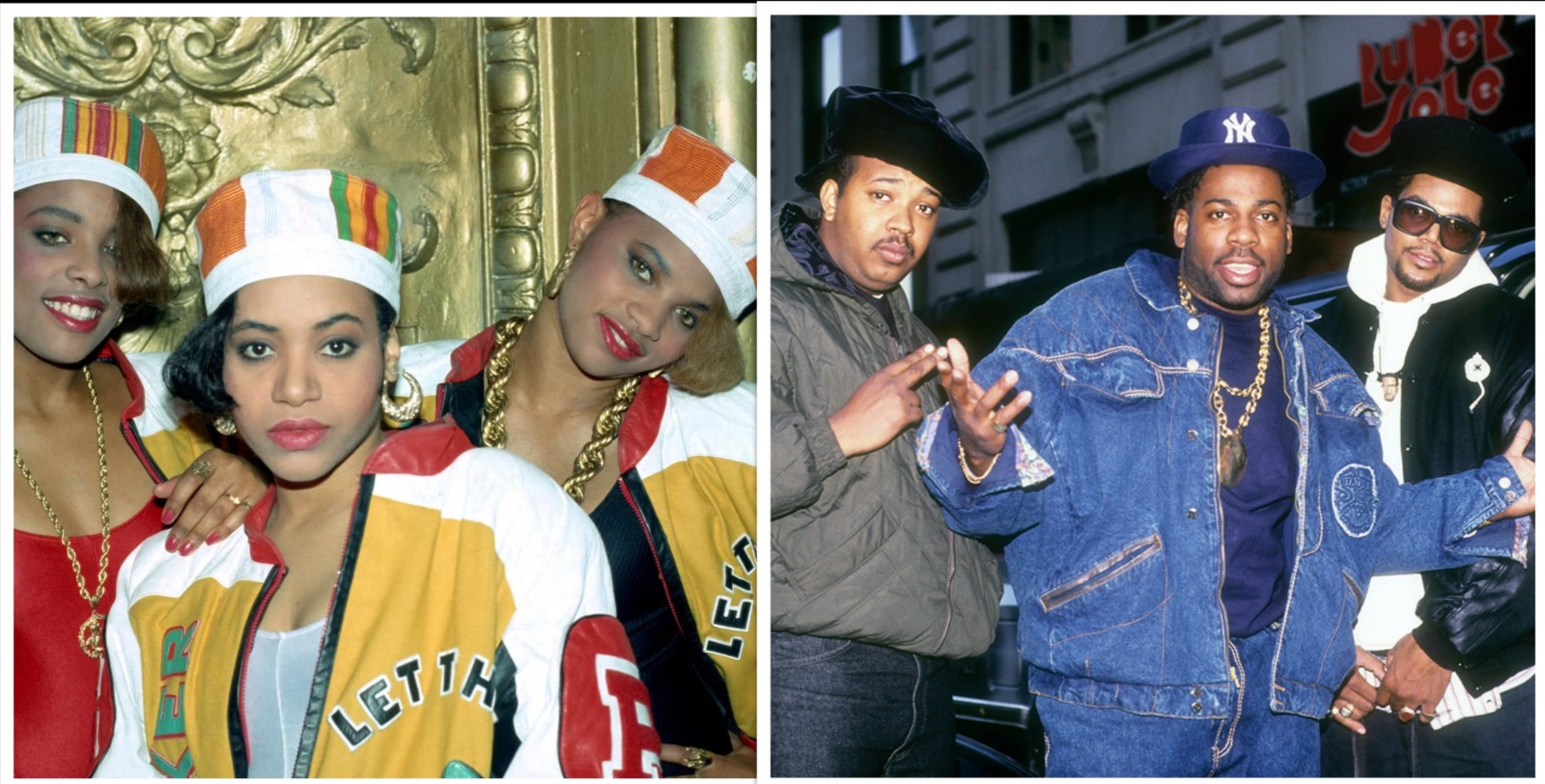 Street Style: Early hip hop fashion was heavily influenced by the practical needs of dancers and street performers. Tracksuits, sneakers, and Kangol hats were staples.
Street Style: Early hip hop fashion was heavily influenced by the practical needs of dancers and street performers. Tracksuits, sneakers, and Kangol hats were staples.
DIY Aesthetic: Customization was key, with artists and fans alike personalizing their clothing with patches, graffiti, and unique designs.
1970s: The Genesis
 Street Style: Early hip hop fashion was heavily influenced by the practical needs of dancers and street performers. Tracksuits, sneakers, and Kangol hats were staples.
Street Style: Early hip hop fashion was heavily influenced by the practical needs of dancers and street performers. Tracksuits, sneakers, and Kangol hats were staples.DIY Aesthetic: Customization was key, with artists and fans alike personalizing their clothing with patches, graffiti, and unique designs.
#3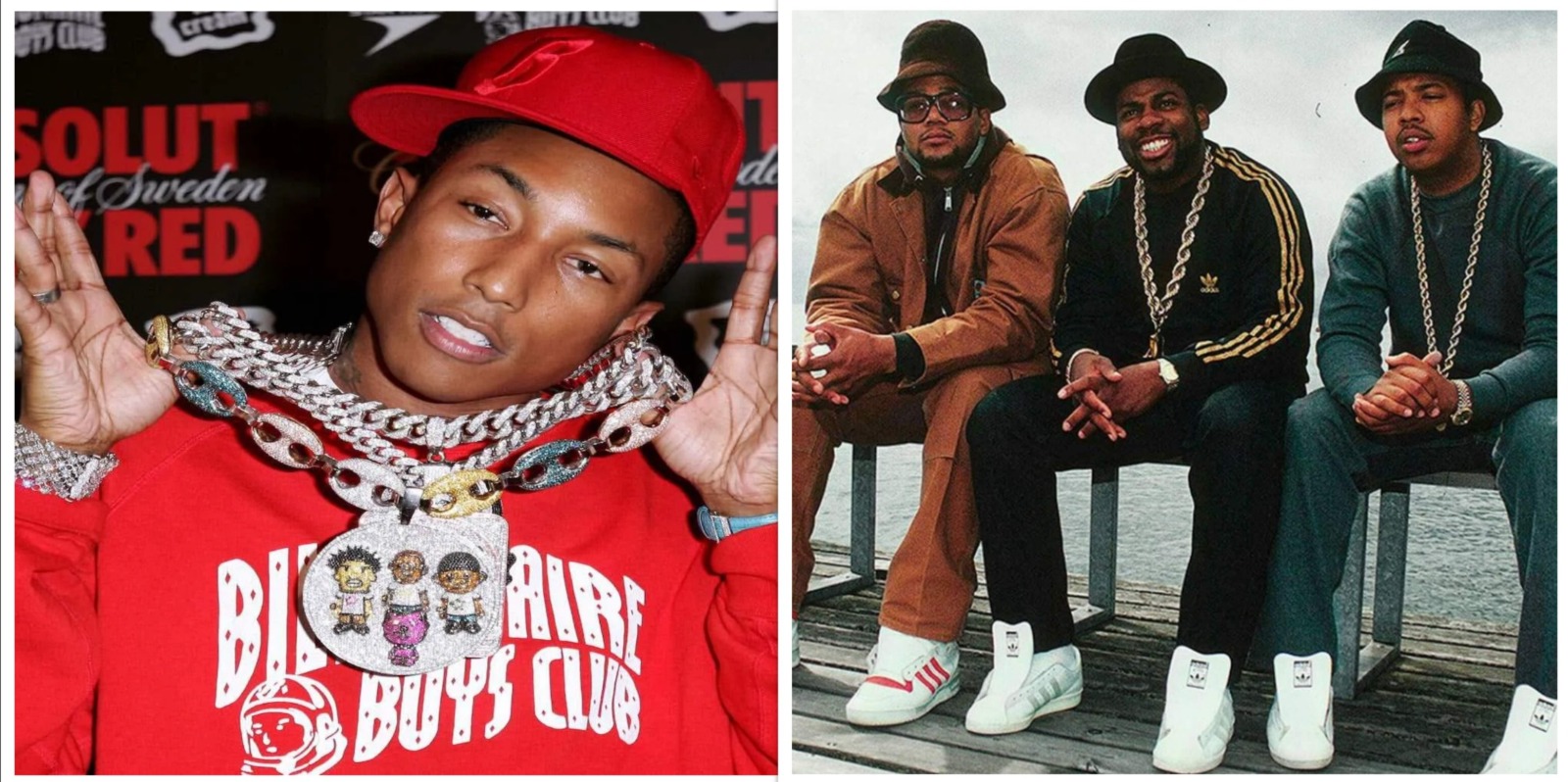 Adidas and Run-DMC: The iconic trio popularized Adidas tracksuits and shell-toe sneakers, cementing the brand's association with hip hop.
Adidas and Run-DMC: The iconic trio popularized Adidas tracksuits and shell-toe sneakers, cementing the brand's association with hip hop.
Bold Statements: Bright colors, oversized gold chains, and large boom boxes became symbols of status and rebellion.
1980s: The Rise of Brand Culture
 Adidas and Run-DMC: The iconic trio popularized Adidas tracksuits and shell-toe sneakers, cementing the brand's association with hip hop.
Adidas and Run-DMC: The iconic trio popularized Adidas tracksuits and shell-toe sneakers, cementing the brand's association with hip hop.Bold Statements: Bright colors, oversized gold chains, and large boom boxes became symbols of status and rebellion.
#4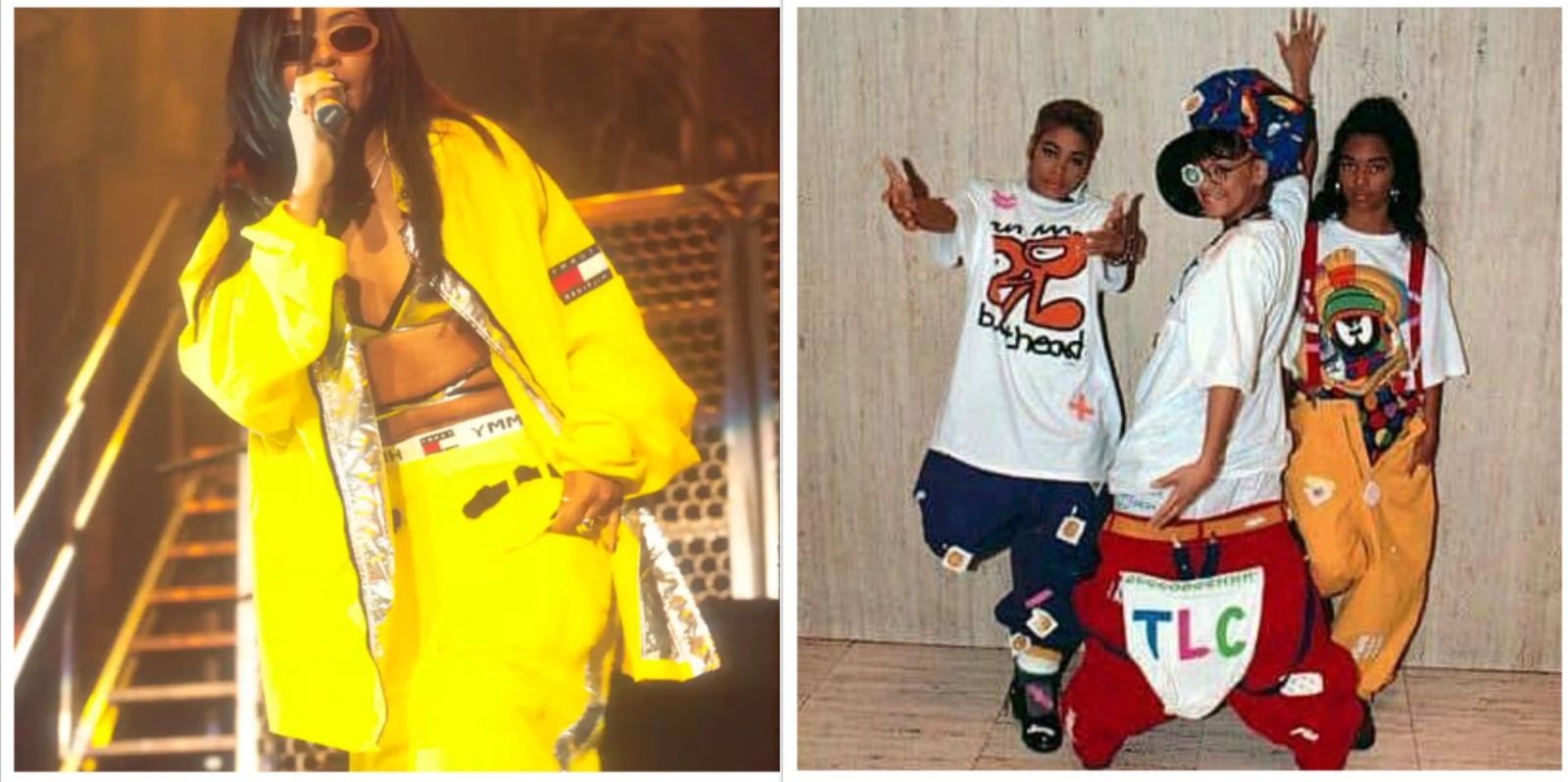 Baggy Clothing: Loose-fitting jeans, oversized shirts, and hoodies defined the era, influenced by the rise of West Coast rap and artists like Tupac Shakur and The Notorious B.I.G.
Baggy Clothing: Loose-fitting jeans, oversized shirts, and hoodies defined the era, influenced by the rise of West Coast rap and artists like Tupac Shakur and The Notorious B.I.G.
Timberland and Tommy Hilfiger: Timberland boots and Tommy Hilfiger apparel became synonymous with hip hop, as artists began collaborating with mainstream fashion brands.
1990s: The Golden Age
 Baggy Clothing: Loose-fitting jeans, oversized shirts, and hoodies defined the era, influenced by the rise of West Coast rap and artists like Tupac Shakur and The Notorious B.I.G.
Baggy Clothing: Loose-fitting jeans, oversized shirts, and hoodies defined the era, influenced by the rise of West Coast rap and artists like Tupac Shakur and The Notorious B.I.G.Timberland and Tommy Hilfiger: Timberland boots and Tommy Hilfiger apparel became synonymous with hip hop, as artists began collaborating with mainstream fashion brands.
#5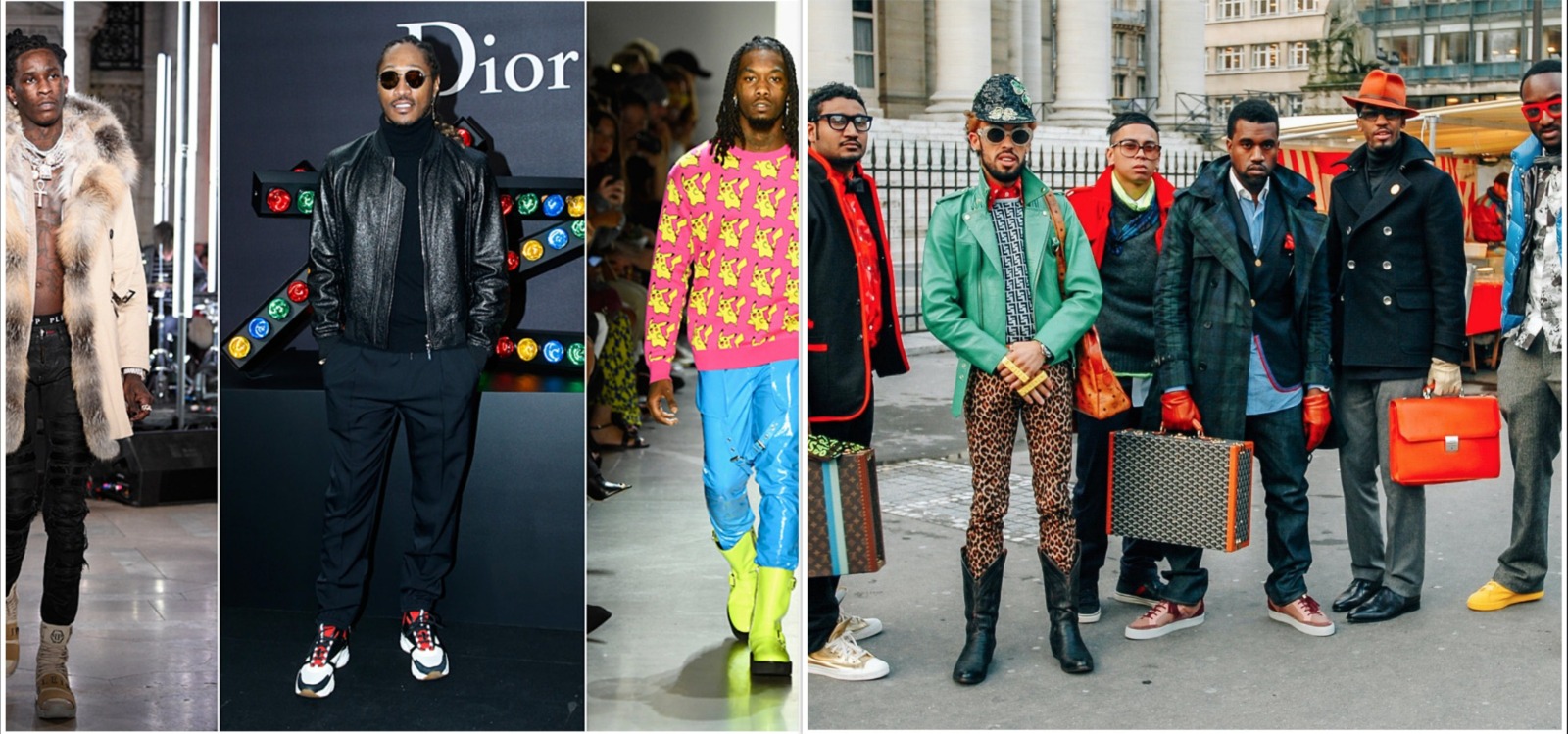 Luxury Brands: The early 2000s saw a shift towards luxury, with brands like Gucci, Louis Vuitton, and Versace becoming prominent in hip hop circles.
Luxury Brands: The early 2000s saw a shift towards luxury, with brands like Gucci, Louis Vuitton, and Versace becoming prominent in hip hop circles.
Bling: Flashy jewelry, including diamond-encrusted chains and grills, epitomized the "bling" culture popularized by artists like Jay-Z and Lil Wayne.
2000s: Bling Era
 Luxury Brands: The early 2000s saw a shift towards luxury, with brands like Gucci, Louis Vuitton, and Versace becoming prominent in hip hop circles.
Luxury Brands: The early 2000s saw a shift towards luxury, with brands like Gucci, Louis Vuitton, and Versace becoming prominent in hip hop circles.Bling: Flashy jewelry, including diamond-encrusted chains and grills, epitomized the "bling" culture popularized by artists like Jay-Z and Lil Wayne.
#6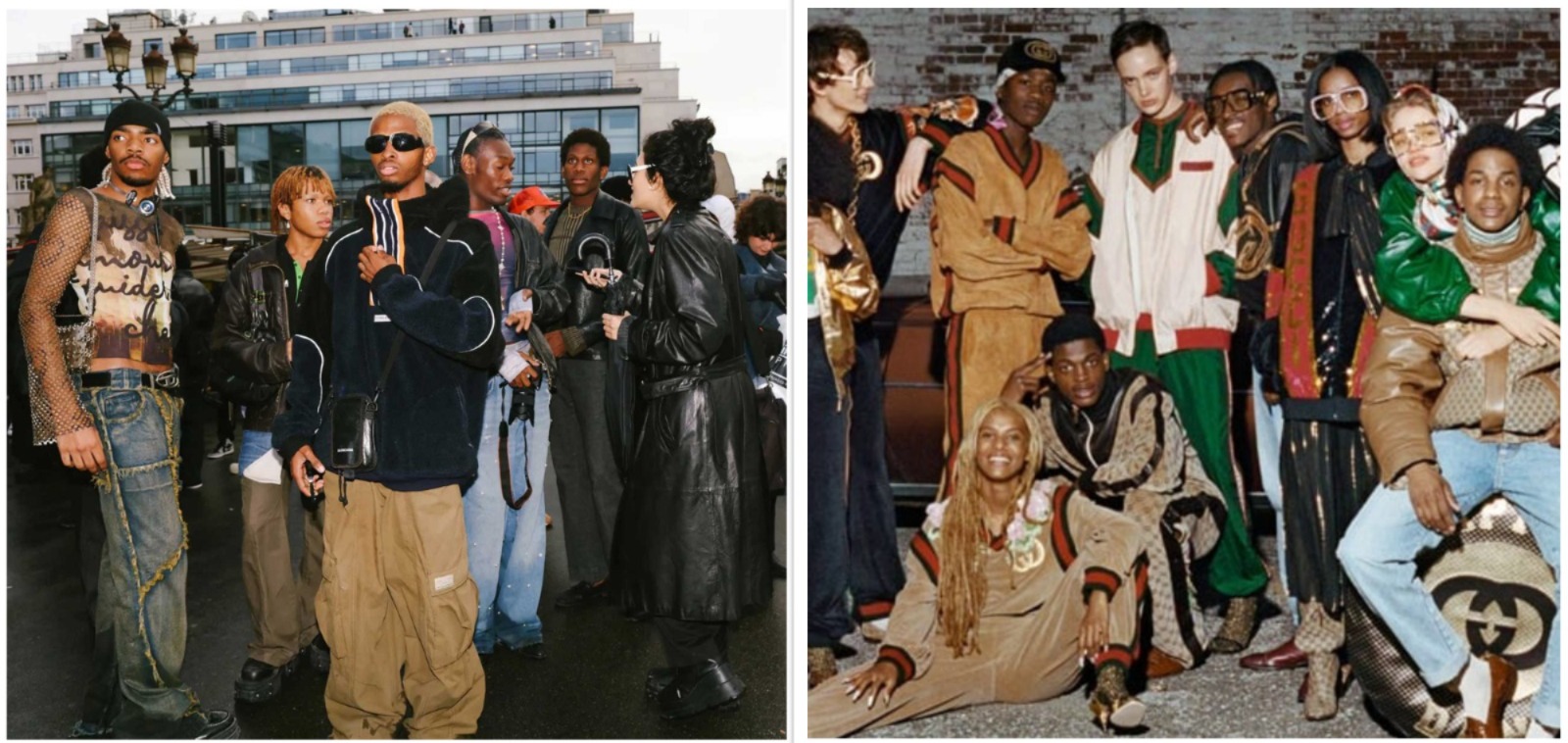 Designer Collaborations: Hip hop artists began collaborating with high-end designers, blurring the lines between streetwear and haute couture. Kanye West's partnership with Adidas for the Yeezy line is a prime example.
Designer Collaborations: Hip hop artists began collaborating with high-end designers, blurring the lines between streetwear and haute couture. Kanye West's partnership with Adidas for the Yeezy line is a prime example.
Streetwear Dominance: Brands like Supreme, Off-White, and A Bathing Ape gained massive popularity, driven by their association with hip hop culture and limited-edition releases.
2010s: High Fashion Integration
 Designer Collaborations: Hip hop artists began collaborating with high-end designers, blurring the lines between streetwear and haute couture. Kanye West's partnership with Adidas for the Yeezy line is a prime example.
Designer Collaborations: Hip hop artists began collaborating with high-end designers, blurring the lines between streetwear and haute couture. Kanye West's partnership with Adidas for the Yeezy line is a prime example.Streetwear Dominance: Brands like Supreme, Off-White, and A Bathing Ape gained massive popularity, driven by their association with hip hop culture and limited-edition releases.
#7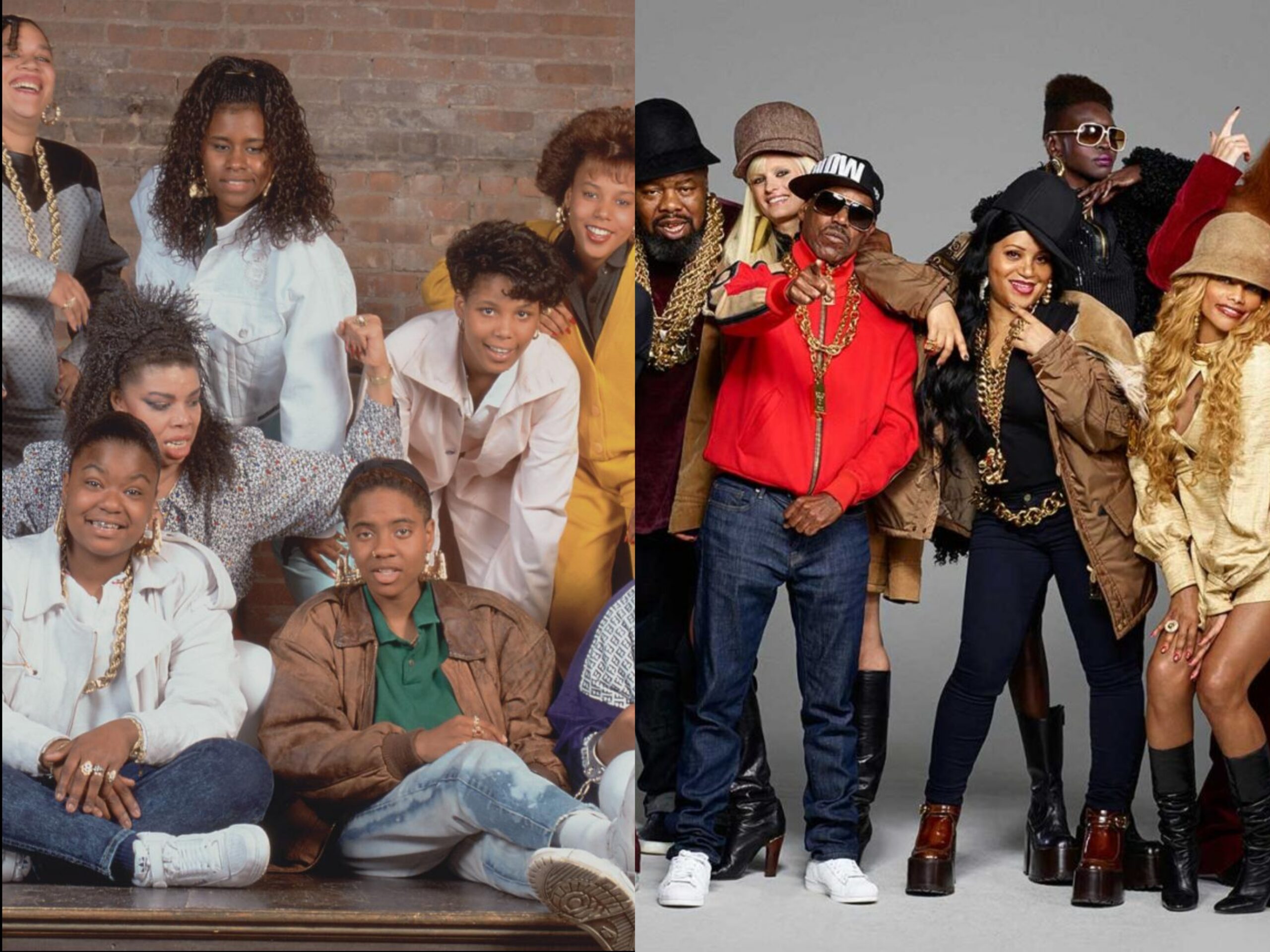 Inclusive Fashion: The focus has shifted towards more inclusive and diverse representation in hip hop fashion, embracing different body types, genders, and cultural backgrounds.
Inclusive Fashion: The focus has shifted towards more inclusive and diverse representation in hip hop fashion, embracing different body types, genders, and cultural backgrounds.
Sustainable Practices: As awareness about environmental issues grows, there is a push towards sustainable and ethical fashion within the hip hop community.
2020s: Diversity and Sustainability
 Inclusive Fashion: The focus has shifted towards more inclusive and diverse representation in hip hop fashion, embracing different body types, genders, and cultural backgrounds.
Inclusive Fashion: The focus has shifted towards more inclusive and diverse representation in hip hop fashion, embracing different body types, genders, and cultural backgrounds.Sustainable Practices: As awareness about environmental issues grows, there is a push towards sustainable and ethical fashion within the hip hop community.
#8
The impact of hip hop fashion is also seen on runways and in high fashion magazines. Designers draw inspiration from streetwear, and hip hop artists are regular fixtures in fashion shows and campaigns. The symbiotic relationship between hip hop and fashion continues to redefine both industries, pushing the boundaries of creativity and expression.
Cultural Impact and Global Influence
Hip hop culture's influence extends far beyond fashion. It has shaped language, social norms, and political movements. Hip hop's global reach is evident in its adoption and adaptation in various cultures around the world, from the UK grime scene to Korean hip hop.The impact of hip hop fashion is also seen on runways and in high fashion magazines. Designers draw inspiration from streetwear, and hip hop artists are regular fixtures in fashion shows and campaigns. The symbiotic relationship between hip hop and fashion continues to redefine both industries, pushing the boundaries of creativity and expression.
#9






